Deciphering Legal Documents: Two ways to quickly determine federal law enforcement snitches - DDD
There is no such thing as a "confidential informant" - the feds may try to sell this nonsense to you, but you will NOT remain "confidential"; everything is documented. They operate by many names: rats, informants, snitches, narc, fink, stool pigeon, stoolie, squealer, and turncoat.
In this episode of Deep Dot Darknet, we are looking at two easy ways that you can learn how to spot an informant in the government's own documents. Reading legal work can be a pain, but once you catch the hang of it, it's like anything else, and typically it takes me about 7 - 10 minutes to know if someone told. We will discuss both: 1. USSG §5K1.1 Letters 2. Rule 35(b) These are the two things I look for immediately. There are many other methods, but I wanted to get these two out there as they will allow you to spot may informants right off the bat. Obviously, there are a lot more ways than this.
The federal government does try to hide the identities of its rats, but at the end of the day, it's public knowledge. https://www.ussc.gov/research/research-publications/use-federal-rule-criminal-procedure-35b §5K1.1 - SUBSTANTIAL ASSISTANCE TO AUTHORITIES (POLICY STATEMENT) Upon motion of the government stating that the defendant has provided substantial assistance in the investigation or prosecution of another person who has committed an offense, the court may depart from the guidelines. (a) The appropriate reduction shall be determined by the court for reasons stated that may include, but are not limited to, consideration of the following:
(1) the court’s evaluation of the significance and usefulness of the defendant’s assistance, taking into consideration the government’s evaluation of the assistance rendered;
(2) the truthfulness, completeness, and reliability of any information or testimony provided by the defendant;
(3) the nature and extent of the defendant’s assistance;
(4) any injury suffered, or any danger or risk of injury to the defendant or his family resulting from his assistance;
(5) the timeliness of the defendant’s assistance.
Source for above: https://guidelines.ussc.gov/gl/%C2%A75K1.1
-----------------------------------------------------------------------------
(b) Reducing a Sentence for Substantial Assistance.
(1) In General. Upon the government's motion made within one year of sentencing, the court may reduce a sentence if the defendant, after sentencing, provided substantial assistance in investigating or prosecuting another person.
(2) Later Motion. Upon the government's motion made more than one year after sentencing, the court may reduce a sentence if the defendant's substantial assistance involved:
(A) information not known to the defendant until one year or more after sentencing;
(B) information provided by the defendant to the government within one year of sentencing but which did not become useful to the government until more than one year after sentencing; or
(C) information the usefulness of which could not reasonably have been anticipated by the defendant until more than one year after sentencing and which was promptly provided to the government after its usefulness was reasonably apparent to the defendant.
(3) Evaluating Substantial Assistance. In evaluating whether the defendant has provided substantial assistance, the court may consider the defendant's presentence assistance.
(4) Below Statutory Minimum. When acting under Rule 35(b), the court may reduce the sentence to a level below the minimum sentence established by statute.
Source for above: https://www.law.cornell.edu/rules/frcrmp/rule_35
Because I don't operate with a script and I answer the question as asked, sometimes I tend to go out of scope. I think I did a bit of that in this, and for that, I apologize. #tor #rats #informant #snitching #federalprison #legaldocuments
[§&$]^_^[§&$]^_^[§&$]^_^--------------------[ CHAPTERS ]--------------------[§&$]^_^[§&$]^_^[§&$]^_^
00:00 Introduction
00:07 Recap of question regarding Darknet vendors and if they get more time than regular drug dealers
00:15 Start of tangent
00:52 aggravating factors
01:32 why most prison consultants suck
01:53 1st way I can tell you ratted: USSG §5K1.1 Letter
02:18 Second way I can tell you told: Rule 35(b)
02:49 Where I look to figure out your an informant/rat
03:37 How rats/informants with Rule 35(b) snitch jackets try to play it in federal prison
04:28 conclusion
04:35 endscreen
[§&$]^_^[§&$]^_^[§&$]^_^--------------------[ SOCIAL MEDIA ]--------------------[§&$]^_^[§&$]^_^[§&$]^_^
OFFICIAL WEBSITE: https://www.doingfedtime.com
FACEBOOK: https://www.facebook.com/doing.fedtime/
TWITTER: https://twitter.com/DoingFedTime
LINKEDIN: https://doingfedtime.com/www.linkedin.com/in/doingfedtime
EMAIL: ksllc27@gmail.com
-
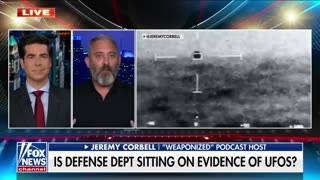 3:01
3:01
UFO/UAP First Contact
11 months agoIs the Defense Department sitting on alien evidence?
8851 -
 6:11
6:11
SweetHomeStAugustine
1 year agoFederal and Police Undercover Agents
639 -
 15:59
15:59
Tom Grieve
3 months ago $0.07 earnedOwn Guns? SPOT + STOP Police + ATF Searches: Knock and Talk, Warrants, Plain View, Exigent And More
3381 -
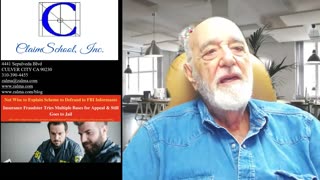 7:53
7:53
Barry Zalma, Inc. on Insurance Law
7 months agoNot Wise to Explain Scheme to Defraud to FBI Informants
233 -
 7:30
7:30
Barry Zalma, Inc. on Insurance Law
6 months agoChutzpah: Criminal Seeks Disability Because his Crime was Discovered and Prosecuted
101 -
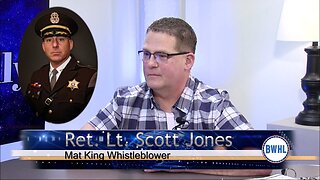 34:39
34:39
Blue Water Healthy Living
2 months ago $2.43 earnedSheriff Mat King Whistleblower with Ret. Lt. Scott Jones - Part 1
2.17K3 -
 2:59
2:59
DeVeRneY
11 months agoA CORRUPT FBI AGENT🎭HAS BEEN CALLED OUT🎨🎪🤹♀️💫
1.05K2 -
 4:36
4:36
Truths Unlimited
1 year agoFBI Whistleblower Confirms Violent Undercover Officers, Confidential Informants & FBI Assets Embedded Jan 6
2.87K1 -
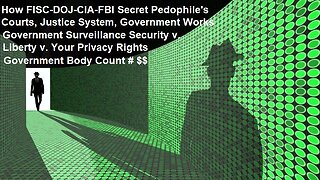 12:34
12:34
What If Everything You Were Taught Was A Lie?
1 year agoHow FISC-DOJ-CIA-FBI Secret Pedophile's Courts, Justice System, Government Works
5.76K7 -
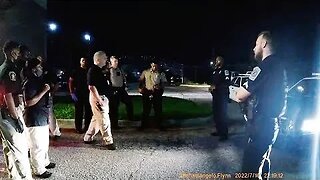 9:57
9:57
MOSTLYPEACEFULMRPUTIN
1 year agoCITY POLICE AND COUNTY SHERIFFS CAUGHT FEUDING ON BODY CAM, PROVING YOU ARE YOUR OWN FIRST RESPONDER
1371